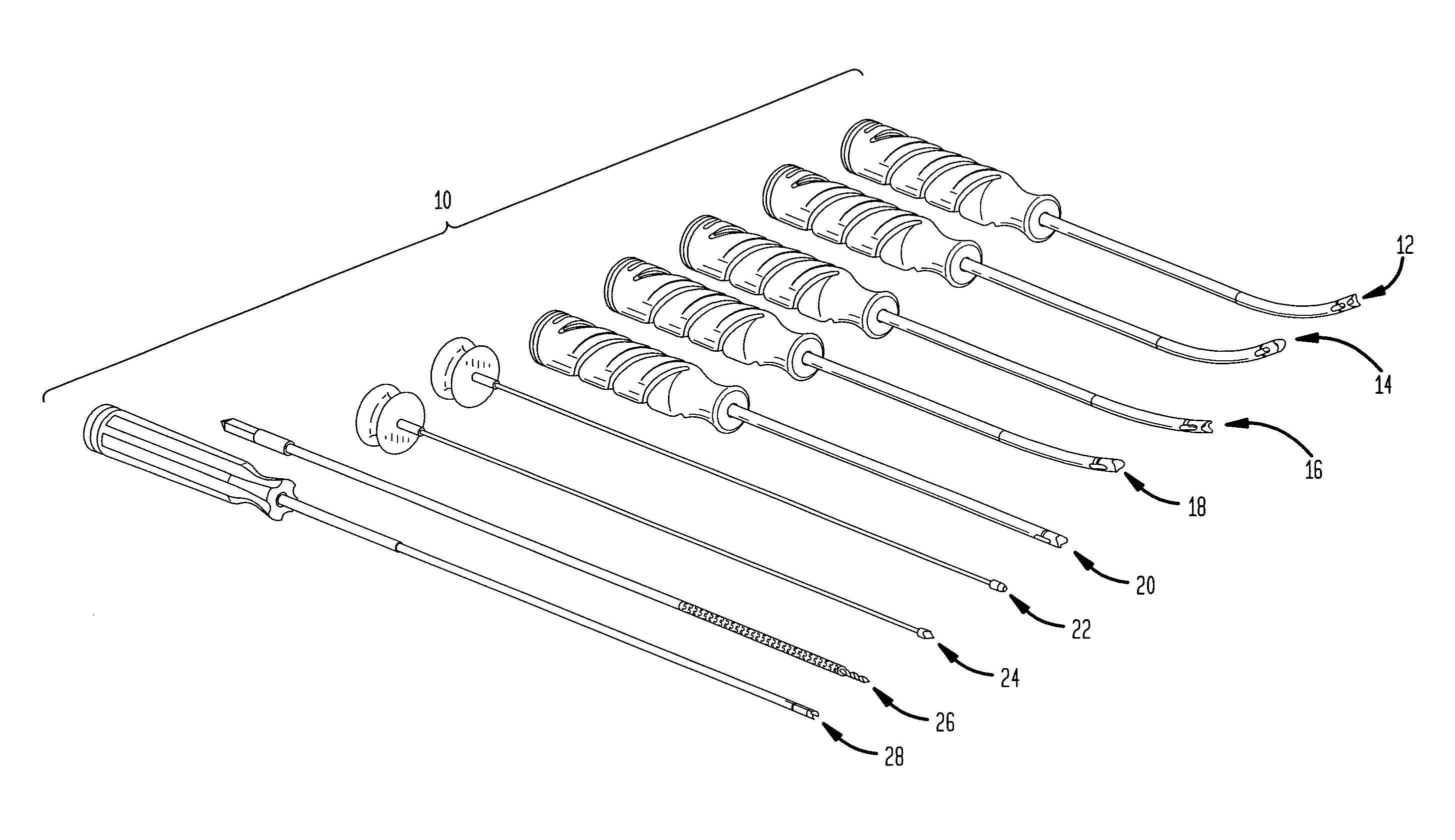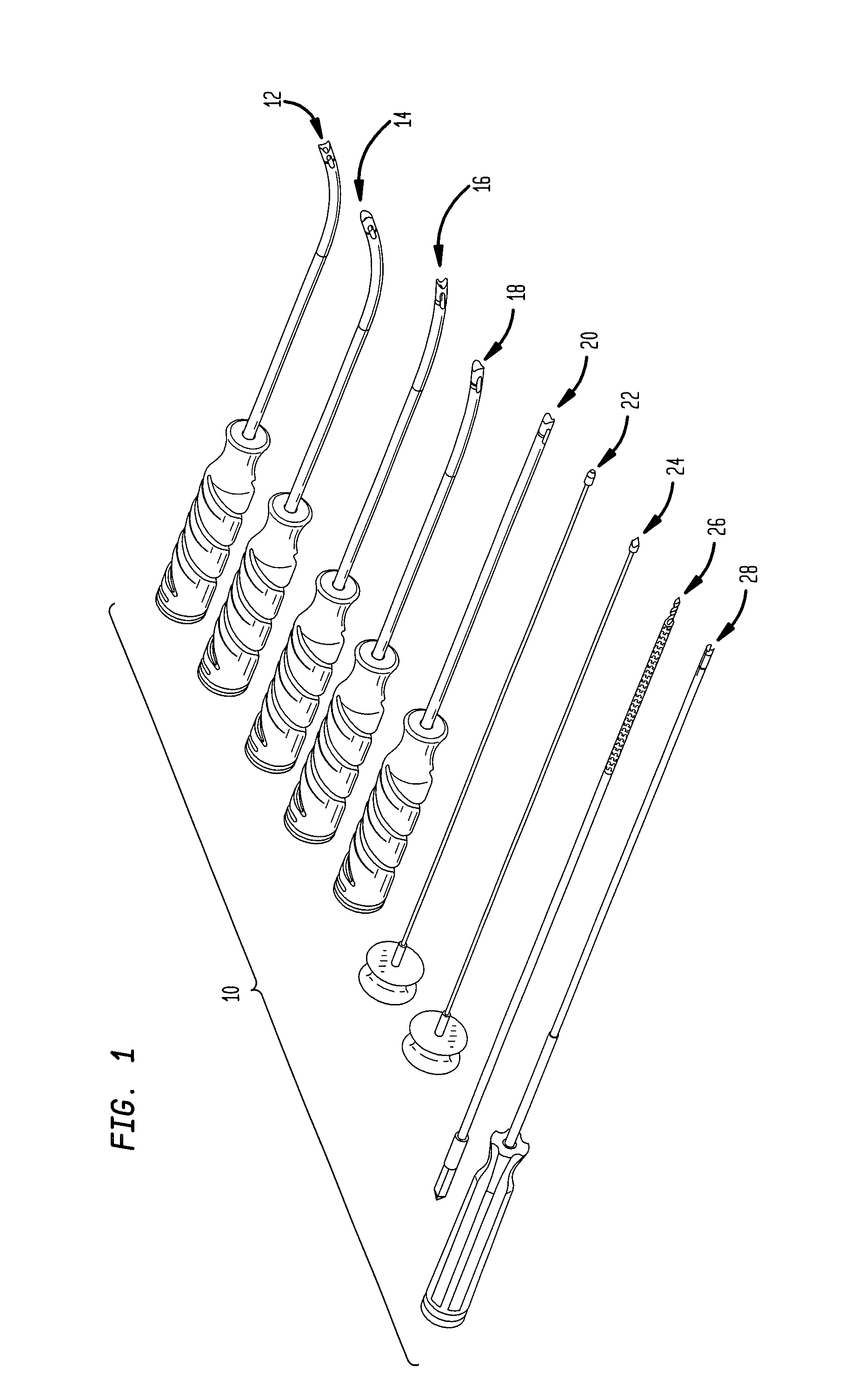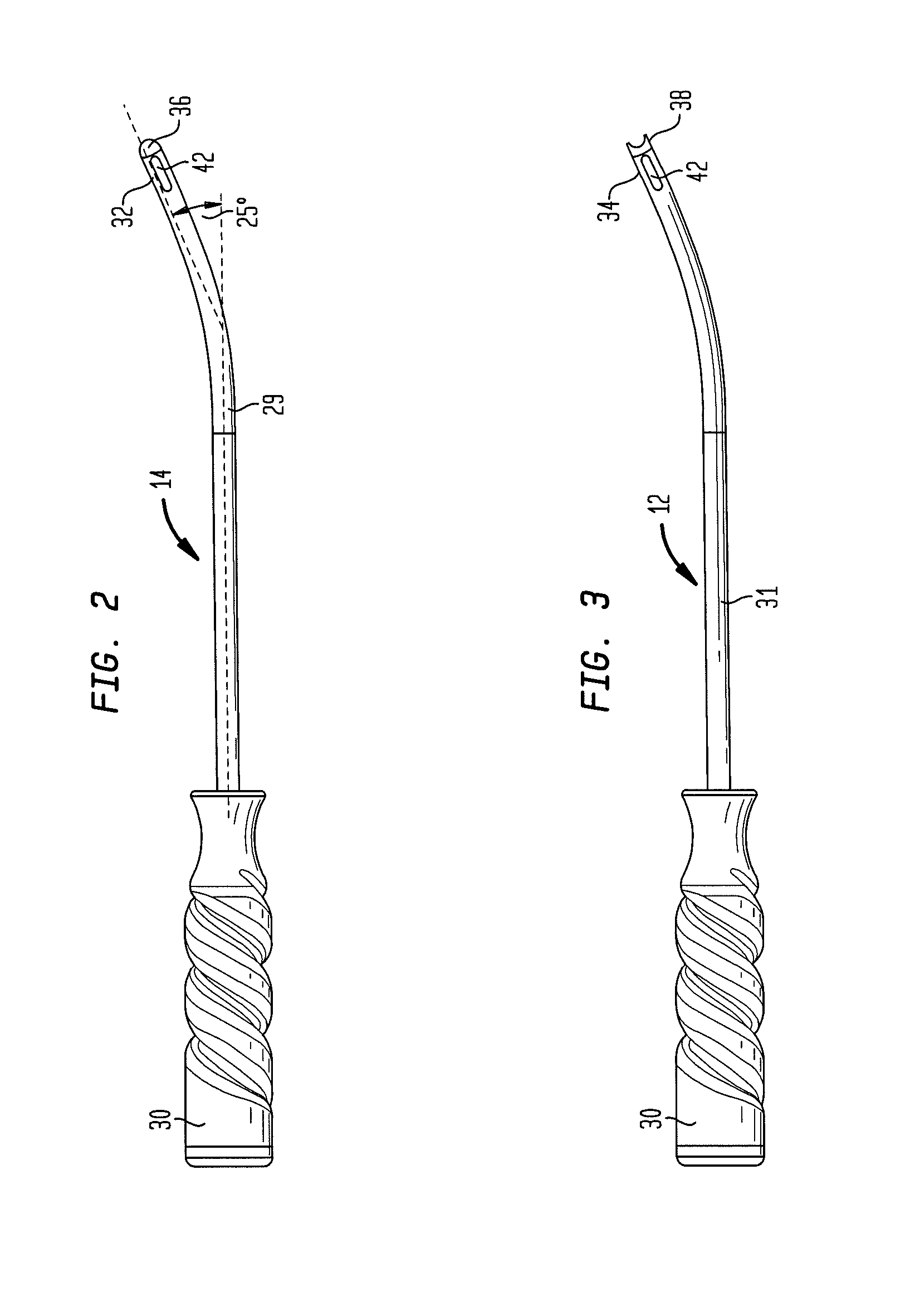Suture anchor implantation instrumentation system
a technology of instrumentation system and suture anchor, which is applied in the field of suture anchor implantation instrumentation system, can solve the problems of shoulder joint pain, shoulder joint instability, and shoulder injuries, and achieve the effects of convenient operation, reliable and repeatability
- Summary
- Abstract
- Description
- Claims
- Application Information
AI Technical Summary
Benefits of technology
Problems solved by technology
Method used
Image
Examples
Embodiment Construction
[0044]Referring to FIG. 1 there is shown one embodiment of an instrumentation system of the present invention generally denoted as 10. The system includes various curved guides having a curved guide shaft with a curved angle of between about 0° and about 90°. Specifically, the curved angle may be about 0° to about 25°, though any other angle is envisioned depending on the application of the guide. The system may consist of, for example, a 25° rotated orientation curved guide 12, a 25° standard orientation curved guide 14, a 12° rotated orientation curved guide 16, a 12° standard orientation curved guide 18, and a 0° (i.e. straight) guide 20. In one example, the rotated orientation guides may be used on the posterior glenoid rim, and the standard orientation guides may be used on the anterior glenoid rim, though this may be reversed if desired. Furthermore, in an alternate example, the rotated orientation guides may be used within the posterior portal, and the standard orientation gu...
PUM
 Login to View More
Login to View More Abstract
Description
Claims
Application Information
 Login to View More
Login to View More - R&D
- Intellectual Property
- Life Sciences
- Materials
- Tech Scout
- Unparalleled Data Quality
- Higher Quality Content
- 60% Fewer Hallucinations
Browse by: Latest US Patents, China's latest patents, Technical Efficacy Thesaurus, Application Domain, Technology Topic, Popular Technical Reports.
© 2025 PatSnap. All rights reserved.Legal|Privacy policy|Modern Slavery Act Transparency Statement|Sitemap|About US| Contact US: help@patsnap.com



